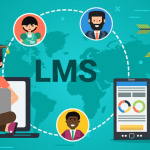In an era where quality and precision standing nearby, the examination of products within domains such as healthcare, life sciences, banking, and aviation has soared to unparalleled heights. The demand for near-zero error tolerance is the resounding cry for these industries, and rightfully so. However, as we plunge deeper into this realm, we discover that the landscape has undergone a significant metamorphosis over the years, bringing a more intricate perspective into sharp focus. In this exploration, we embark through the intricacies of healthcare and medicine app testing, a domain renowned for its stringent regulations and compliance requirements. The main aim is to dissect the effectiveness of these regulations and highlight the indispensable role of end-user feedback in the pursuit of flawlessly functioning healthcare software.
The Regulatory Maze: Navigating Healthcare Compliance
The reality of healthcare app testing in the digital world next accuracy and adherence serve as powerful sentinels. At its essence, healthcare compliance poses a labyrinthine obstacle, incorporating a range of decrees and benchmarks, including the esteemed Health Insurance Portability and Accountability Act (HIPAA). To skillfully maneuver through this regulatory enigma, one must wrestle with the constantly evolving character of decrees and grapple with the intricacies of their acceptance and enforcement. In this segment, we traverse the elaborate network of healthcare compliance, dissecting its subtleties and delving into the eternal query of its effectiveness.
HIPAA and Beyond: A Multifaceted Challenge
The healthcare sector operates within a tightly regulated framework, where HIPAA software compliance is a pivotal aspect. The Health Insurance Portability and Accountability Act (HIPAA) serves as one of the prominent compliance standards, exerting a substantial influence on the development and deployment of healthcare applications. These comprehensive mandates extend their reach across various facets, encompassing everything from bolstering the security of electronic health records to enhancing the accessibility and usability of software. Ultimately, the primary goal of these regulations to effectively reduce the likelihood of errors and breaches in healthcare systems.
The Perpetual Question
However, the effectiveness of these compliance measures remains a subject of perpetual debate. Two key factors contribute to this ongoing discourse:
a) The Ever-Changing Mandates
Regulatory mandates are not static; they evolve to address emerging challenges and technological advancements. Consequently, maintaining compliance necessitates a continuous commitment to staying abreast of the latest requirements within the domain.
b) Adoption and Enforcement Challenges
Mandates, no matter how comprehensive, are only as good as their adoption and enforcement. Ensuring that they are not merely paper tigers requires a rigorous commitment from all stakeholders involved in the development and testing processes.
The Science and Art of Software Testing
In the realm of software testing, there exists a dynamic interplay between the scientific and the artistic. While compliance standards inject scientific rigor into the process, the human element, represented by the end user, introduces an irreplaceable artistic dimension. The utilization of compliance software tools is an indispensable aspect of healthcare app testing, automating checks and verifications in accordance with stringent regulatory requirements. In this section, we delve into how the fusion of these elements is essential for ensuring the quality and reliability of healthcare applications so to learn more about such medical application.
The Role of Compliance Software Tools
To address the complex landscape of compliance, a plethora of compliance software tools have emerged. These tools inject a scientific rigor into the testing process by automating checks and verifications in alignment with regulatory requirements. They are indispensable in the quest for error reduction.
The Human Element: End-User Feedback
However, software testing is not a monolithic, purely scientific endeavor. It is also an art, one that cannot be perfected by algorithms and mandates alone. The invaluable dimension of end-user feedback comes to the forefront. True end users, with their hands-on experience in the field, provide insights and perspectives that are often beyond the reach of comprehensive mandates.
The Power of Partnership
Inferring from the experiences of testing organizations in many industries, it is clear that developing relationships with end customers is of utmost significance. These collaborations may take a variety of shapes:
Individual Test Efforts: Involving end users in individual testing efforts, where their unique insights are harnessed to uncover nuanced issues.
Crowdsourced Testing: Planned crowdsourced testing, where a diverse group of end users collectively assesses the software’s functionality and usability.
Domain Expertise: Collaboration with domain professionals, such as doctors, nurses, and clinical staff, who bring deep subject-matter knowledge to the testing process.
The Synergy of Efforts
It is important to stress that establishing software quality in healthcare applications cannot be achieved solely through mandates or end-user feedback. Both strategies must be successfully combined in order to achieve the ultimate goal of near-zero error tolerance. A well-defined test plan and a competent team that can decide on release sign-off with knowledge underpin this synergy.
Future with Zero Error Tolerance
The growth of healthcare app testing is evidence of how quality assurance is changing. Regulations and compliance requirements may lay the groundwork for accuracy, but they are not perfect. The partnership with end users, whose real-world experiences give richness and authenticity to the testing process, is the final piece of the puzzle.
The goal of reaching zero error tolerance throughout the healthcare and other sectors becomes not only feasible but also achievable by finding the ideal balance between compliance and end-user engagement. The development of healthcare app testing is a shining example of advancement, showing us that cooperation and adaptability are the foundations of success. Looking ahead, the quest for superiority in healthcare software will continue to be a frontier that is always expanding because to the fusion of mandates and feedback, precision, and empathy.


